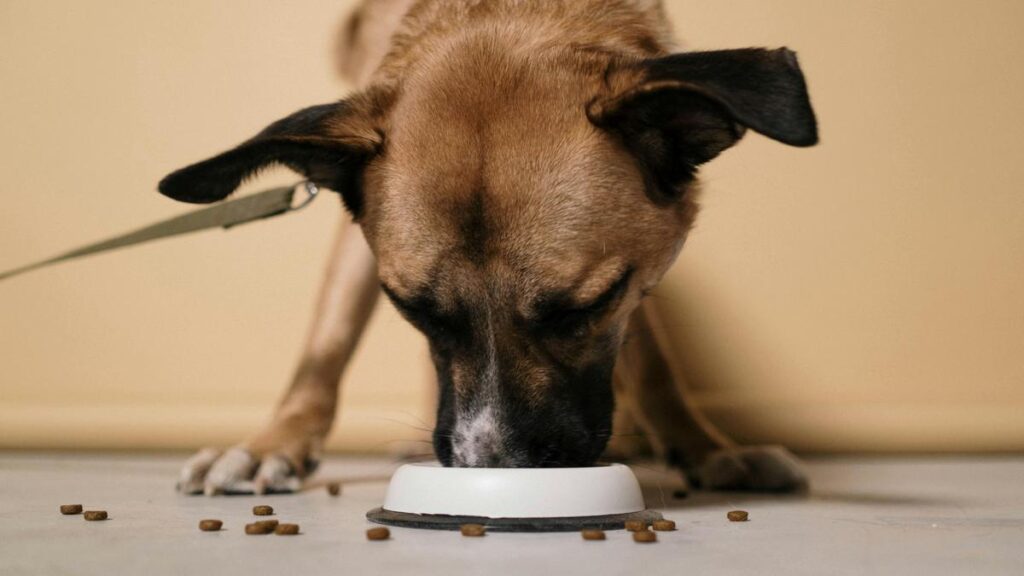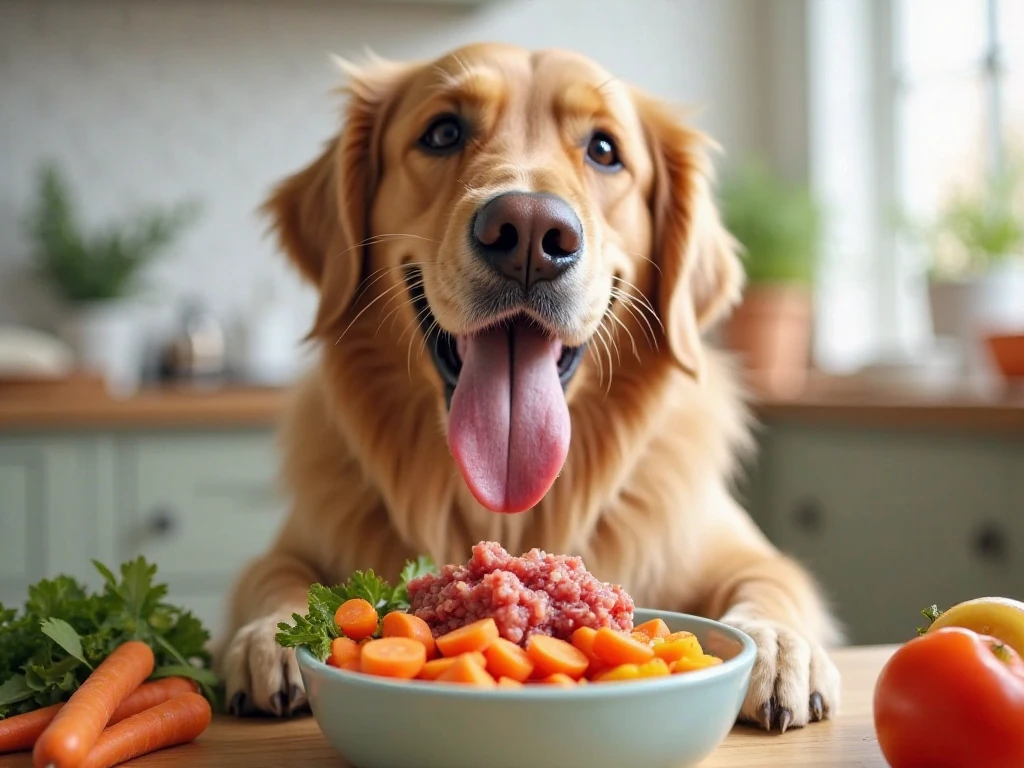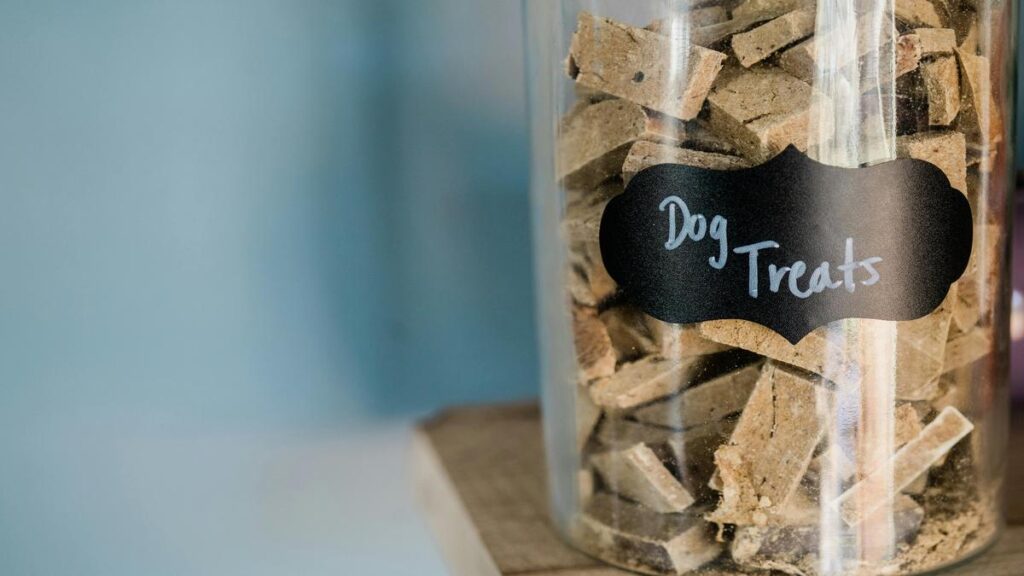Natural Diets for Dogs What You Need to Know is an exciting look into how you can improve your furry friend’s meals.
You’ll discover why natural diets are great for your pup and the basics of canine nutrition. From raw food options to easy homemade recipes, you’ll learn how to create a healthy and balanced diet.
Plus, we’ll highlight what to look for in dog food and share important pet food guidelines. Let’s dive in and make mealtime the best part of your dog’s day!
Key Insights
- Natural diets for dogs can improve their overall health.
- Look for fresh ingredients, like meat and veggies.
- Avoid artificial additives and fillers in pet food.
- Consult your vet before switching your dog’s diet.
- Transition slowly to avoid stomach issues.

Summary
What Are Natural Diets for Dogs: What You Need to Know
Alright, let’s dive into the world of natural diets for dogs. You might be wondering, what exactly does that mean? Well, a natural diet for dogs typically involves feeding them whole, unprocessed foods that mimic what their ancestors would have eaten in the wild. Think meats, vegetables, and some fruits. It’s all about getting back to basics.
Many dog owners are now leaning toward these diets, believing they’re healthier and more aligned with a dog’s natural instincts. If you’re curious about what this means for your furry friend, you’re in the right place.
Why Choose Natural Diets for Dogs?
Choosing a natural diet for your dog comes with numerous benefits. Many owners report that their dogs have more energy, shinier coats, and better digestion. Sounds good, right?
But why is that? Well, commercial dog food can be packed with fillers, preservatives, and artificial ingredients. These can lead to allergies and other health issues. By opting for a natural diet, you’re likely to avoid those nasty additives. Plus, you might find that your pup enjoys their meals more when made with fresh ingredients.
Have you ever seen your dog sniff around their food bowl, looking less than thrilled? Switching to a natural diet could change that.
Understanding Canine Nutrition Basics
Now, let’s break down what your dog really needs in their diet. Dogs are omnivores, which means they can eat both meat and plants. But, just like us, they need a balance of nutrients to stay healthy.
Here are some key components to keep in mind:
- Proteins: Crucial for building and repairing tissues. Think chicken, beef, fish, and eggs.
- Carbohydrates: While dogs don’t need as many carbs as humans do, they still need some for energy. Good sources include sweet potatoes and brown rice.
- Fats: Healthy fats are vital for a shiny coat and healthy skin. Look for sources like fish oil or chicken fat.
- Vitamins and Minerals: These help with everything from bone health to immune function. Fresh fruits and veggies are great sources.
It’s important to note that not all human foods are safe for dogs. For example, chocolate and onions can be toxic. So, always do your homework before introducing new foods. For more information on safe and unsafe foods, check out Foods Dogs Can and Cannot Eat.
Raw Dog Food: Is It Right for Your Pup?
Ah, the raw food diet. This is one of the more popular natural diets for dogs. It involves feeding your dog raw meats, bones, fruits, and veggies. Proponents argue that this diet is closer to what dogs would eat in the wild.
But is it right for your pup? Here are a few things to consider:
- Health Benefits: Many people swear by the benefits of raw diets, including improved dental health and better digestion.
- Safety Concerns: Raw food can carry bacteria like Salmonella. It’s crucial to handle it properly and keep your dog’s feeding area clean.
- Nutritional Balance: It can be tricky to ensure your dog is getting all the necessary nutrients on a raw diet. Consulting with a vet or a pet nutritionist is a smart move. For guidance on transitioning to a natural diet, refer to Natural Diet Transition: Proven Methods.
If you’re thinking about switching to a raw diet, start slow. Introduce raw foods gradually to see how your dog reacts.
Homemade Dog Meals: Easy Recipes to Try
Making your dog’s food at home can be fun and rewarding. Plus, you know exactly what’s going into their meals. Here are a couple of simple recipes to get you started:
Chicken and Rice
- Ingredients:
- 1 cup of brown rice
- 1/2 cup of diced carrots
- 1/2 cup of peas
- 1 pound of ground chicken
- Instructions:
- Cook the rice according to package instructions.
- In a separate pan, cook the ground chicken until it’s no longer pink.
- Add the carrots and peas, and cook for a few more minutes.
- Mix everything together and let it cool before serving.
Beef and Sweet Potato Stew
- Ingredients:
- 1 pound of ground beef
- 1 sweet potato, diced
- 1 cup of carrots, diced
- 1 cup of green beans, chopped
- 4 cups of water
- Instructions:
- In a large pot, brown the ground beef.
- Add the sweet potato, carrots, and green beans.
- Pour in the water and bring to a boil. Reduce heat and let it simmer until the veggies are tender.
- Cool before serving.
These meals are easy to prepare and can be modified based on your dog’s preferences. Always check with your vet to ensure these recipes meet your pup’s specific dietary needs.
If you are someone who does not have time to prepare food for your pet, consult a veterinarian about this kibble Dr. Harvey’s Canine Health Miracle Dog Food. and to read about this Reviews
Key Dog Food Ingredients to Look For
When shopping for dog food, whether it’s commercial or natural diets for dogs, there are some key ingredients you should keep an eye out for. Here’s a quick checklist:
- Real Meat: Look for a specific meat listed as the first ingredient, like chicken or beef.
- Whole Grains: Ingredients like brown rice or oats are better than fillers like corn or wheat.
- Fruits and Vegetables: Ingredients like blueberries, carrots, and spinach can boost nutrition.
- Healthy Fats: Look for sources like fish oil or chicken fat, which are good for your dog’s skin and coat.
Avoid foods with vague terms like “meat by-products” or artificial preservatives. You want to keep it as natural as possible. For more tips on choosing the right dog food, visit 5 Tips for Choosing the Best Dog Kibble.
How to Create a Balanced Dog Diet
Creating a balanced diet for your dog doesn’t have to be complicated. Here are a few steps to help you get started:
- Consult Your Vet: This is key. Your vet can help you understand your dog’s specific needs based on their age, weight, and health.
- Mix It Up: Variety is important. Rotate proteins and include different fruits and veggies to keep things interesting.
- Watch Portions: Overfeeding can lead to obesity. Make sure you’re giving the right portions based on your dog’s size and activity level.
- Supplements: Sometimes, dogs might need extra vitamins or minerals. Again, your vet can guide you here.
Creating a balanced diet is all about understanding what your dog needs and being mindful of their health. For further insights, check out Easy Ways to Start a Natural Diet for Dogs.
The Benefits of Natural Diets for Dogs
So, what are the real benefits of switching to a natural diet for dogs? Here are a few key points:
- Improved Health: Many owners report fewer health issues and allergies.
- Better Digestion: Natural diets for dogs can be easier on your dog’s digestive system.
- Shinier Coat: You might notice your dog’s coat looking healthier and shinier.
- More Energy: A diet rich in whole foods can lead to more playful and energetic pups.
Plus, feeding your dog a natural diet can strengthen the bond between you. It’s a way to show you care about their health and happiness.
Pet Food Guidelines You Should Follow
When it comes to feeding your dog, there are some guidelines you should keep in mind:
- Read Labels: Always read the ingredient list on dog food. The first few ingredients should be high-quality proteins.
- Check for AAFCO Approval: The Association of American Feed Control Officials (AAFCO) sets standards for pet food. Look for their approval on the label.
- Avoid Fillers: Stay away from foods that contain fillers like corn or soy. They don’t provide much nutrition for your dog.
- Consult Your Vet Regularly: Regular check-ups can help you stay on top of your dog’s health and dietary needs.
Following these guidelines can help you make informed decisions about your dog’s diet. For more detailed information, explore Natural Diet Hacks: Save Money and Cook for Your Dog.
Holistic Pet Care: A Natural Approach to Dog Health
Holistic pet care is all about treating your dog as a whole. This means looking at their physical, emotional, and social needs. A natural diet fits perfectly into this approach.
Here are some holistic practices to consider:
- Regular Exercise: Keeping your dog active is just as important as what they eat.
- Mental Stimulation: Engage your dog with toys, puzzles, and training. It keeps their mind sharp.
- Natural Remedies: Consider natural supplements or herbs that can support your dog’s health.
Remember, a happy dog is a healthy dog. By taking a holistic approach, you can support your pup’s well-being in a comprehensive way.

Conclusion
In conclusion, embracing natural diets for dogs can be a game changer for your furry friend.
You’ve learned how these diets can lead to better health, improved digestion, and a shinier coat. By focusing on whole, unprocessed foods, you’re not just feeding your dog; you’re nurturing their well-being.
Remember, it’s all about balance and understanding your dog’s unique needs. So, take the plunge, consult your vet, and start experimenting with those homemade recipes!
Your dog deserves the best, and a natural diet might just be the ticket to a happier, healthier life. If you’re hungry for more tips and insights, don’t hesitate to check out more articles on Tech Havela. Happy feeding!
Frequently Asked Questions
What are natural diets for dogs?
Natural diets for dogs focus on whole, unprocessed foods. You want to include meat, vegetables, and grains. It’s about feeding your dog like nature intended!
Are homemade dog diets safe?
Yes, as long as you follow proper recipes. You need balanced meals with protein, carbs, and fats. Always check with your vet first.
Can I include bones in my dog’s natural diet?
Raw bones can be good for dogs. They help clean teeth and provide nutrients. Avoid cooked bones, as they can splinter and cause harm.
How do I transition my dog to a natural diet?
Start slow! Mix new food with old food over a week. Gradually increase the natural food until it’s all new. Keep an eye on your dog’s reactions. For proven methods on transitioning, refer to Natural Diet Transition: Proven Methods.
What types of meat are best for my dog?
You can use chicken, beef, turkey, and fish. These meats are rich in protein. Just make sure they’re cooked or raw, depending on your dog’s needs.
Should I add supplements to my dog’s natural diet?
Sometimes, yes! Vitamins and minerals can help with nutrition. Consult your vet to find out what’s best for your pup.
How do I know if a natural diet is right for my dog?
Watch your dog! Look for healthy skin, shiny coat, and good energy. If anything seems off, talk to your vet about natural diets for dogs: what you need to know.
**Sidnir Vieira**
Founder of TechHavela
A passionate pet and tech content creator, helping dog owners across the U.S. make smarter decisions for their furry friends.



